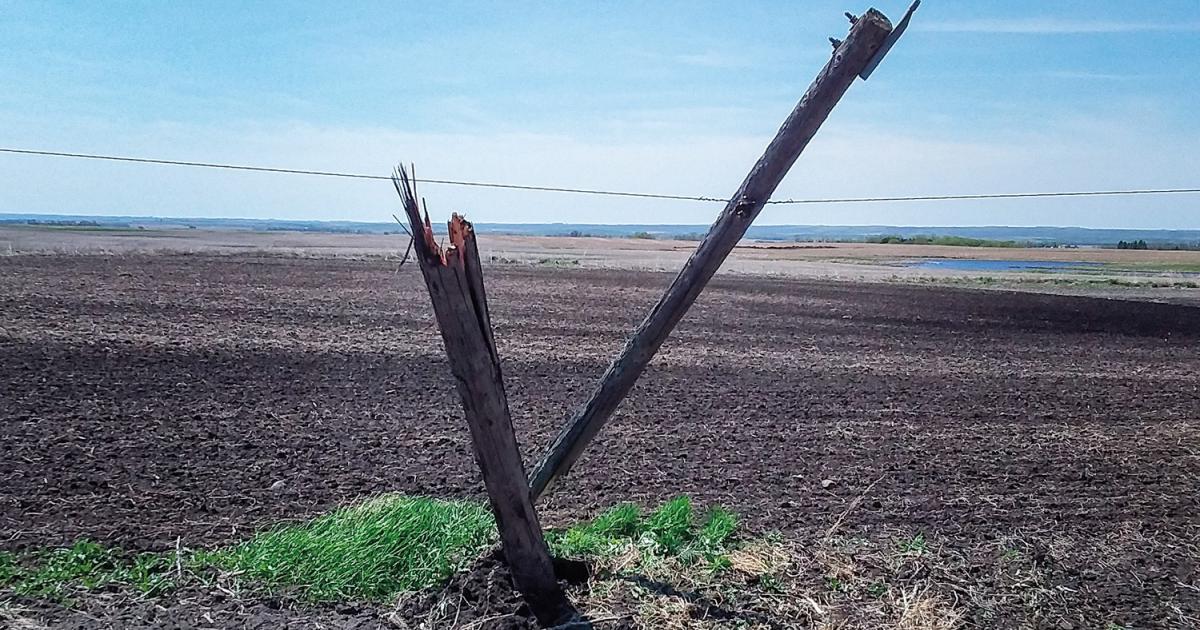A delegation of North Dakotans met with Sen. John Hoeven in April, as 2,000 electric cooperative leaders from across the country were in Washington, D.C., to discuss reliability concerns amid the nation's trend toward increased dependence on electricity to power more of the economy. PHOTO COURTESY OFFICE OF SEN. JOHN HOEVEN
The U.S. Energy Information Administration (EIA) predicts electricity demand will drop about 1% during the second quarter of 2023 compared to the same period last year, and coal is expected to play a reduced role in the U.S. energy mix.
The EIA projects electricity use will drop to 4,000 billion kilowatt-hours (kWh) in 2023 from last year's record high of 4,048 billion kWh.
The decrease in demand, along with more generation from renewable energy sources and lower natural gas prices, will also “significantly" lower wholesale electric power prices over the next two quarters this year, the EIA said in its April 11 Short-Term Energy Outlook.
Coal-fired power plants will account for “significantly less generation" this spring than in the past, the EIA said.
“We forecast 17% less U.S. coal-fired generation in the spring of 2023 than in the spring of 2022. Coal plants that retired in the past year will reduce coal-fired generating capacity by about 11 gigawatts (5%) compared with the spring of 2022," the report said.
The EIA expects coal to provide an average of 17% of total U.S. generation this year, down from 20% last year. Nuclear will rise slightly from 19% in 2022 to 20% this year, and generation from renewable energy sources will see the largest year-over-year increase, up two points from 22% last year to 24% this year. Natural gas will hold steady at a 39% share of total generation.
WHAT ABOUT NORTH DAKOTA?
For North Dakota-based generation and transmission cooperatives, coal provides the largest share of generation for their members.
In 2021, coal-based generation accounted for 46.5% of Basin Electric Power Cooperative’s energy portfolio mix. Generation from renewables accounted for 23.6%.
Minnkota Power Cooperative’s 2022 energy portfolio included 55% coal, 34% wind and 8% hydro.
Both Basin Electric and Minnkota use a diverse generation mix to deliver the lowest-cost power reliably and safely to cooperative members.
“Electric cooperatives were formed to provide reliable and affordable electricity for their members. That commitment holds true yet today, and we believe can be accomplished through an all-of-the-above energy strategy,” says Chris Baumgartner, Basin Electric’s senior vice president of member and external relations. “Because our resource portfolio is so diverse, the co-op’s power supply is reliable – if one source isn’t producing, there are other options available to fill in the gaps.”
That includes baseload generation, which is a term used in the electric industry to describe generation that is available 24/7 and encompasses coal and nuclear generation. More simply, baseload generation is reliable in all weather conditions.
“Coal remains an important part of our resource mix because it has the ability to operate on a 24/7 basis, including through the hottest summer days and coldest winter nights. Without the reliability and resiliency of coal, it would be extremely difficult to meet the energy needs of our members in a safe and affordable manner,” says Todd Sailer, Minkota’s vice president of power supply.
Coming out of a North Dakota winter that set records for snowfall and cold temperatures – and with many places across the country having experienced harsher-than-average winter conditions – baseload generation capacity seems even more critical.
Plus, the EIA expects electricity use will rebound in 2024 and reach a new record-high 4,062 billion kWh.
With the nation trending toward a future that depends on electricity to power more of the economy, the National Rural Electric Cooperative Association (NRECA) and 2,000 electric cooperative leaders from across the country, including North Dakota, recently spoke to policymakers in Washington, D.C., about meeting increased electric demand.
“The increased demand must be accounted for as we plan to meet tomorrow’s energy needs,” says Josh Kramer, executive vice president and general manager of the North Dakota Association of Rural Electric Cooperatives.
Electric cooperatives also pushed leaders on the “disorderly” retirement of existing generation sources.
“According to the North American Electric Reliability Corporation, a not-for-profit entity with regulatory authority over reliability and security of the grid, the ‘disorderly’ retirement of existing generating assets is directly impacting reliability. Many generation assets taken off-line in recent years have been replaced with sources providing less capacity, no capacity or capacity that’s intermittent and not always available. Reliability has been threatened as a result,” NRECA states.
In the 15 U.S. states covered by the Midcontinent Independent System Operator, which includes Minnkota members, Cass County Electric Cooperative in Fargo and Nodak Electric Cooperative in Grand Forks, the number of warnings issued when electric supply is at risk of not meeting demand quadrupled from 2020 to 2021.
“Reliably keeping the lights on is vital for local communities, the economy and national security. Today’s energy decisions will determine if there are enough resources to meet tomorrow’s energy needs,” Kramer says.










